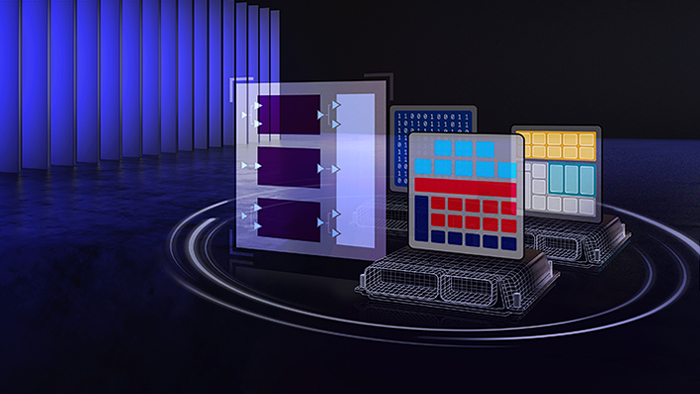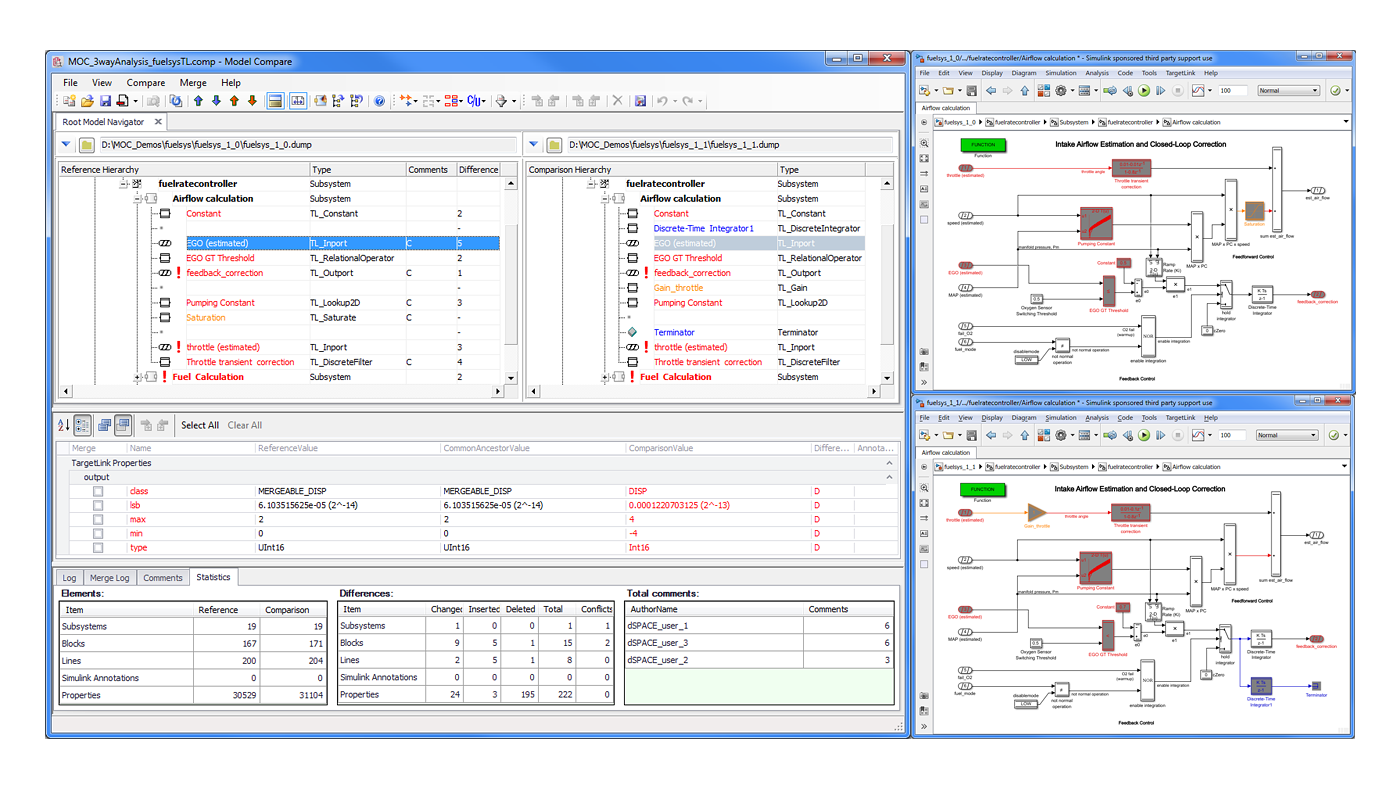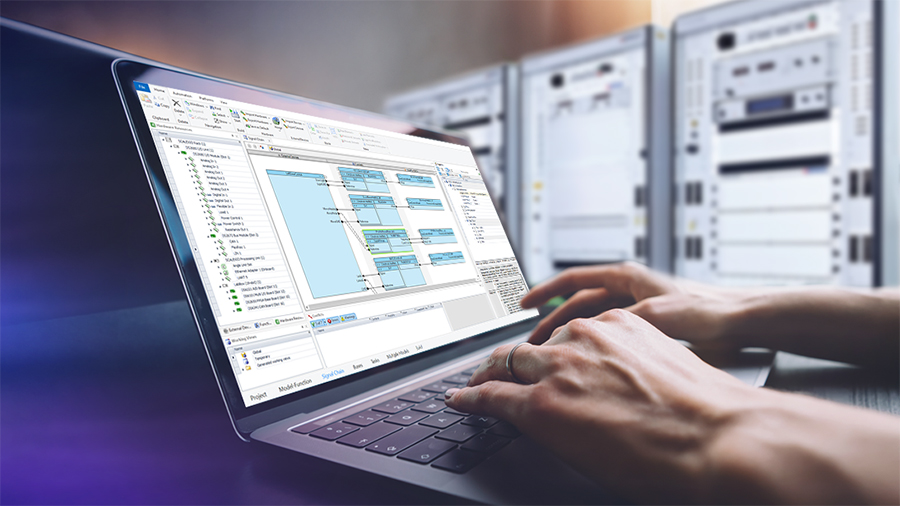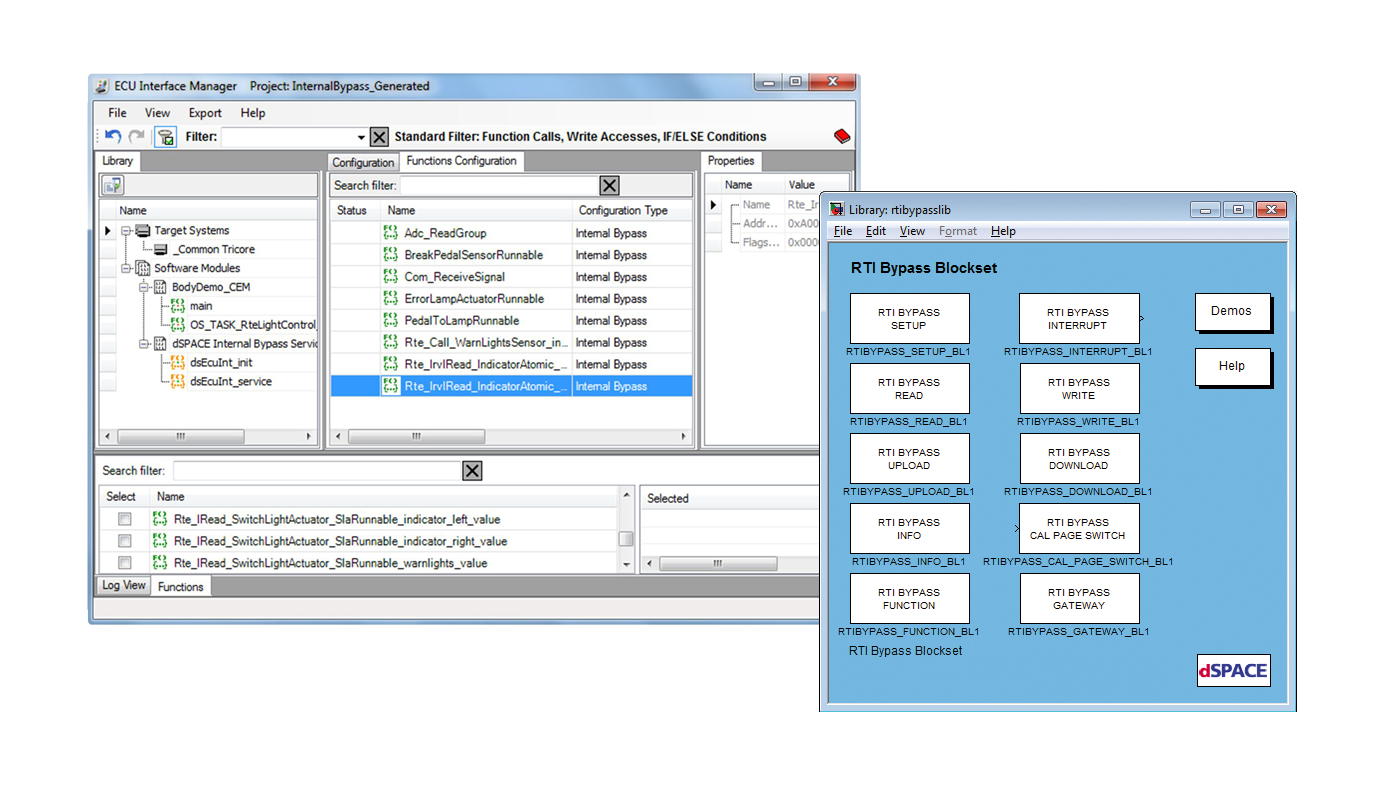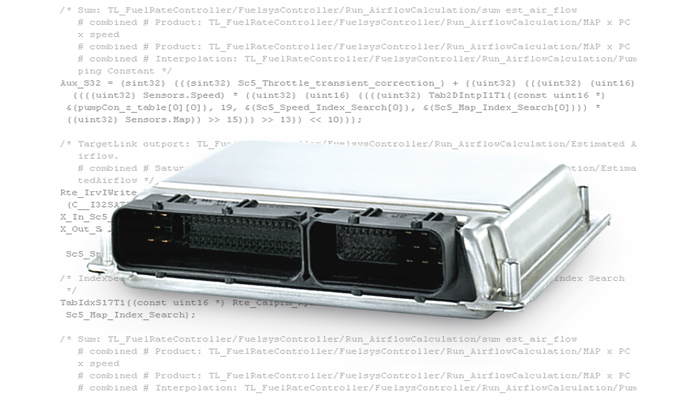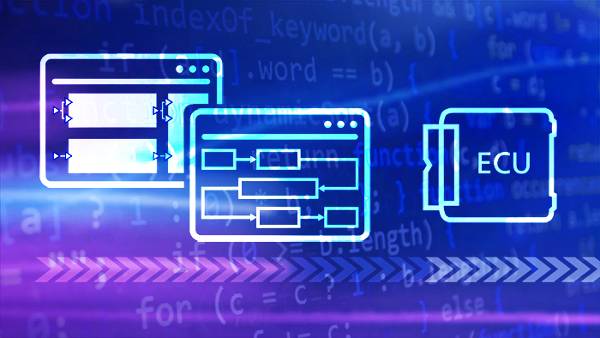With TargetLink, you can convert graphical models directly from Simulink® into highest-quality production code.
What is TargetLink?
TargetLink is software that generates highly efficient C code for electronic control units (ECUs) and domain controllers straight from MathWorks® Simulink®/Stateflow®, making TargetLink an essential tool for your model-based embedded production software and systems development.
The C code generation options in TargetLink range from plain ANSI C code to optimized fixed- or floating-point code for AUTOSAR platforms. By supporting Adaptive AUTOSAR, TargetLink supports C++ code generation. Moreover, TargetLink comes with software design features as well as built-in code optimization, simulation, and testing functionalities so that you can quickly verify and optimize your generated results. TargetLink interacts smoothly with other tools from dSPACE and with tools from other vendors, which together form the TargetLink Ecosystem.
Application Areas
TargetLink lets you develop production software for ECUs and domain controllers in the automotive industry and further fields, covering applications such as:
- E-mobility and electric drives
- Advanced driver assistance systems (ADAS)
- Highly automated and autonomous vehicles
- Comfort electronics
... and many more.
Be Inspired by the Capabilities of TargetLink
TargetLink in application: Get to know what TargetLink contributed to our customer's projects.
Automatic Code Generation
Automotive Standards
Certifications
Fits the developer's needs
Strong Partner Tools
Functionality Overview
| Feature | Description | Benefit |
| Code efficiency | Efficient fixed-point or floating-point production code directly from Simulink®/Stateflow® (with support for included MATLAB code, see optional module) | Your specifications – models and diagrams – are directly translated into efficient C code |
| Code reliability | Consistent, deterministic translations of models into stress-tested C code | Errors such as typing errors, oversights, misunderstandings are avoided |
| Human readability |
Concise, yet readable code | Code reviews are easy to perform |
| Automatic scaling | Intelligent scaling based on worst-case propagation of signal ranges and simulation-based scaling | Shortens the time-consuming and error-prone scaling process |
| Test mechanisms | Various test levels to test the production code against the specification (MIL, SIL, PIL) | Malfunctions are found at the earliest stage |
| Incremental code generation | Modular code generation, i.e., for specific subsystems | Faster code generation, preserving approved code |
| Model referencing support | Developing models on a modular/component basis | Distributed development by large teams is much easier, and large models can be handled more efficiently. |
| Multirate code | Full support of multirate systems with intertask communication | You can define tasks at block level |
| TargetLink Data Dictionary | Central container to handle variables, data structures, scaling formulas, tasks, functions | You can manage complex data to plan and structure your projects |
| Compliance with standards | Compliance with relevant standards such as ASAM-MCD 2MC (ASAP2), AUTOSAR, and MISRA | Quality and interoperability guaranteed |
| Calibration data generation | Calibration data exported as ASAM-MCD 2MC (ASAP2) file for calibration tools | Automated and complete process with perfect consistency between model and calibration data |
| Documentation | Automatic model and code documentation | Your projects are transparent and trackable |
| AUTOSAR software component (SWC) container exchange | Exchanging AUTOSAR SWC containers between TargetLink and SystemDesk | Safe and convenient round trips for AUTOSAR software development. Access to SystemDesk simulation for proper software integration testing. |
| Component-based development | Innovative interface concept for ports, measurement signals and calibration parameters | Easily increase software reuse across different projects |
| Connection to dSPACE VEOS | Export virtual ECUs from TargetLink and run them in VEOS in combination with other virtual ECUs and standard dSPACE tools like ControlDesk | Easy testing and experimenting with TargetLink code |
| FMI support | Export of Functional Mock-up Units (FMUs) from TargetLink models based on the Functional Mock-up Interface (FMI) standard | Execution of TargetLink-generated code with offline and real-time simulators from third parties and dSPACE |
| On-Target Bypassing | Integrating new functions directly into existing ECUs (using TargetLink and dSPACE ECU interface software) | Seamless transition from prototyping to series production. No need to perform complex software integration. |
Required Products
| Integrated development environment |
|
| Operating system | www.dspace.com/go/os_compatibility |
Optional Products
TargetLink Engineering Services
Our engineering portfolio includes special TargetLink customer services, for example:
- Hands-on support during introduction of TargetLink
- Support during evaluations and pilot projects
- Customer-specific TargetLink training
- Integrating TargetLink into your development processes
- Model analysis and advice
- Support for developing Classic and Adaptive AUTOSAR-compliant software and integrating Classic AUTOSAR software components
- Support for integrating the generated code in the ECU’s software environment
- Tool chain development and maintenance
- Process consulting

TargetLink 2023-B
New and improved features for better modeling and more efficient code generation.
- The SOLE (Systems of Linear Equations) Solver block becomes part of the TargetLink block library
- Dynamic selection of variables at Data Store Read and Data Store Write blocks
- Smooth transition from classic initialization mode to simplified initialization mode
- More C++ constructs: enumeration class data types, static casts, and namespaces on the module level
- Providing text-based DD files in the DDJSON format for better handling of DD files in version control systems like Git or in model-as-code workflows







